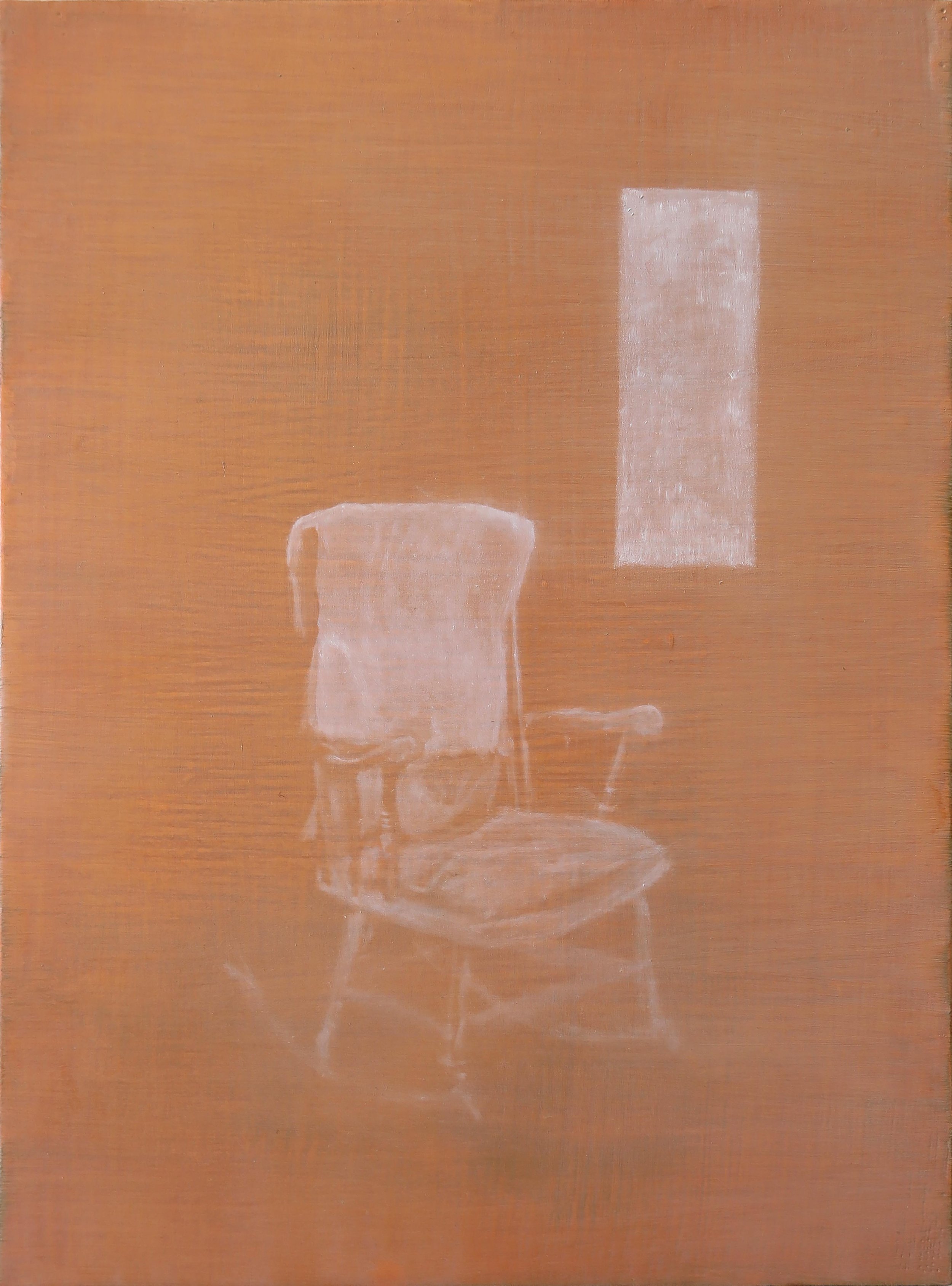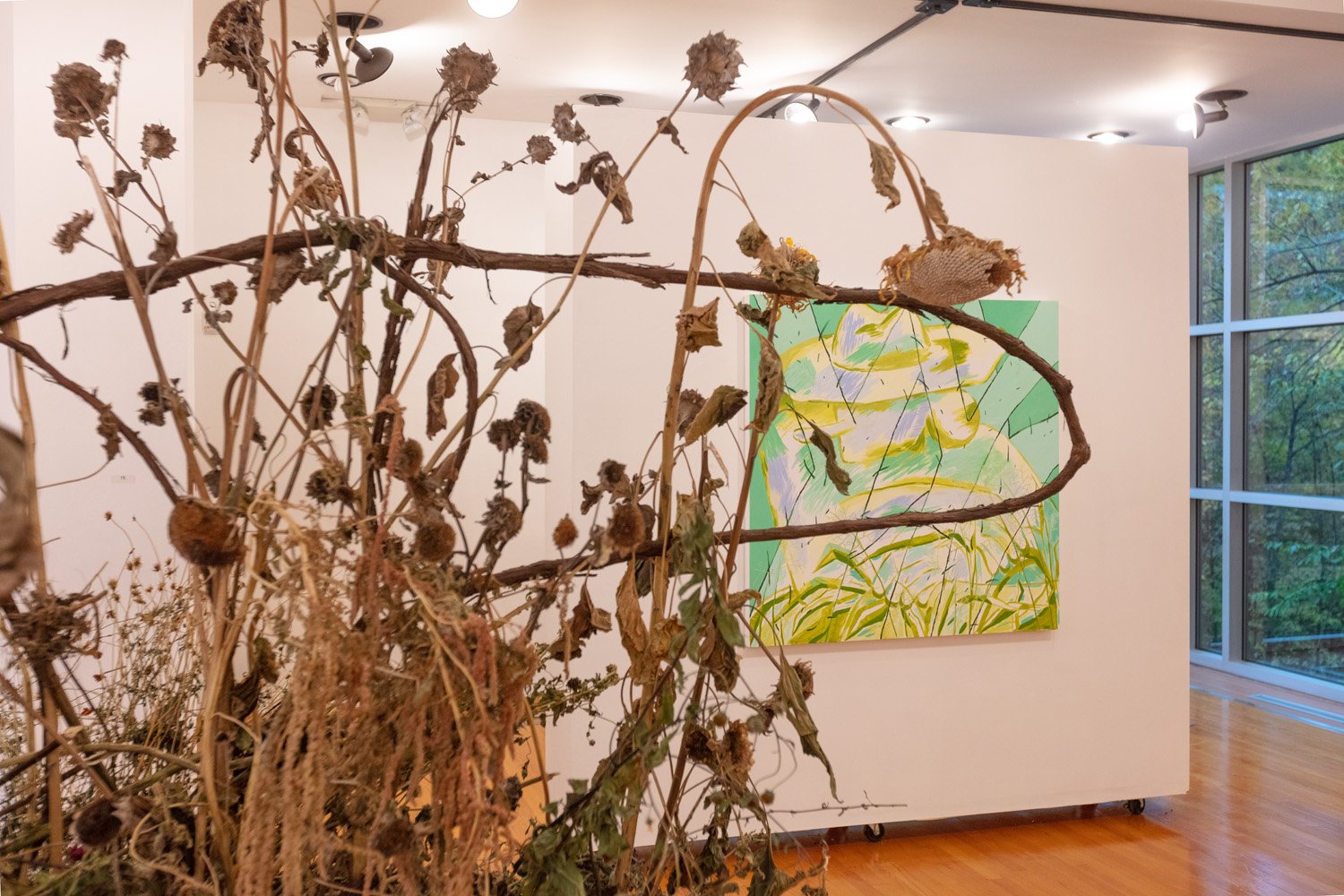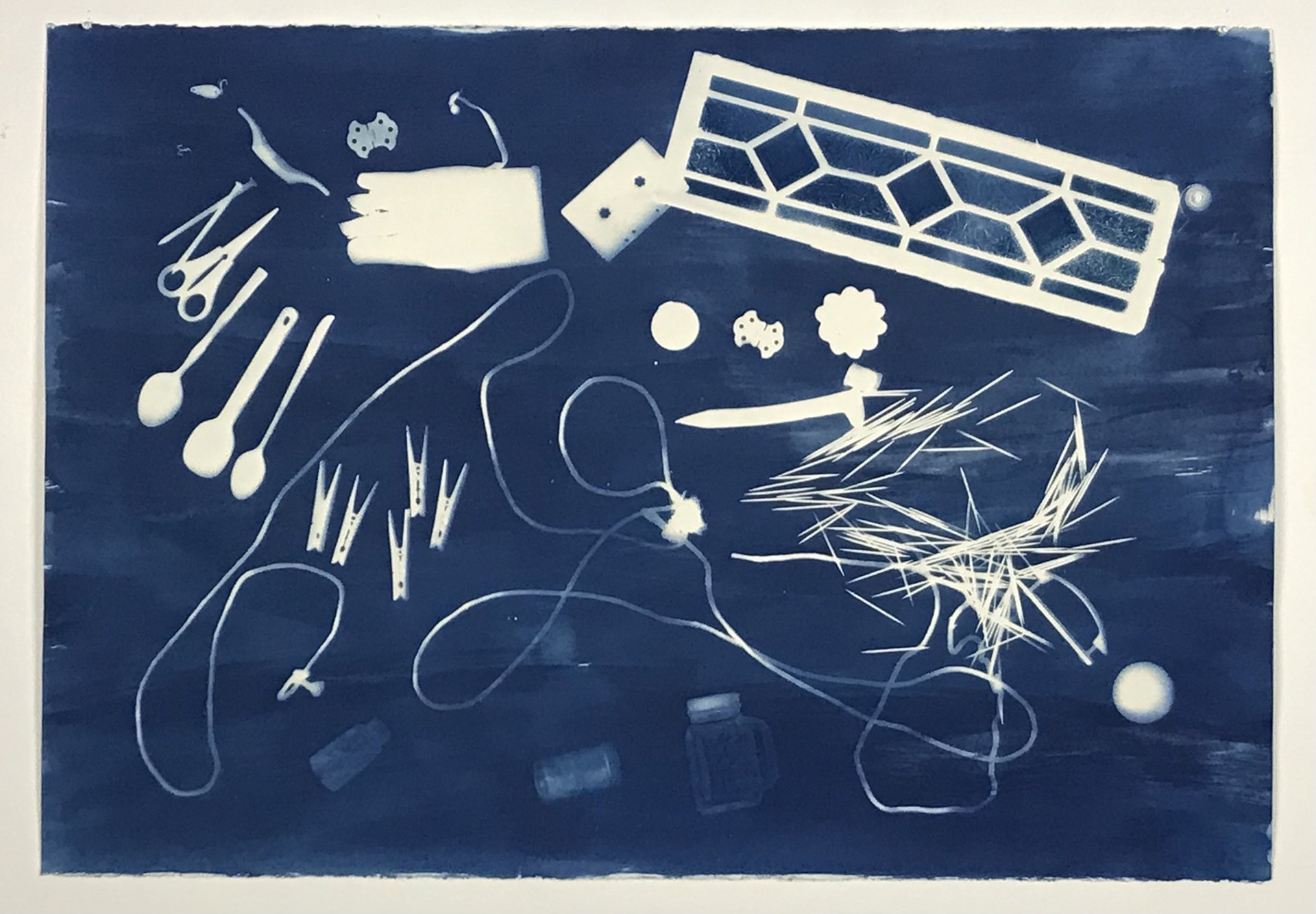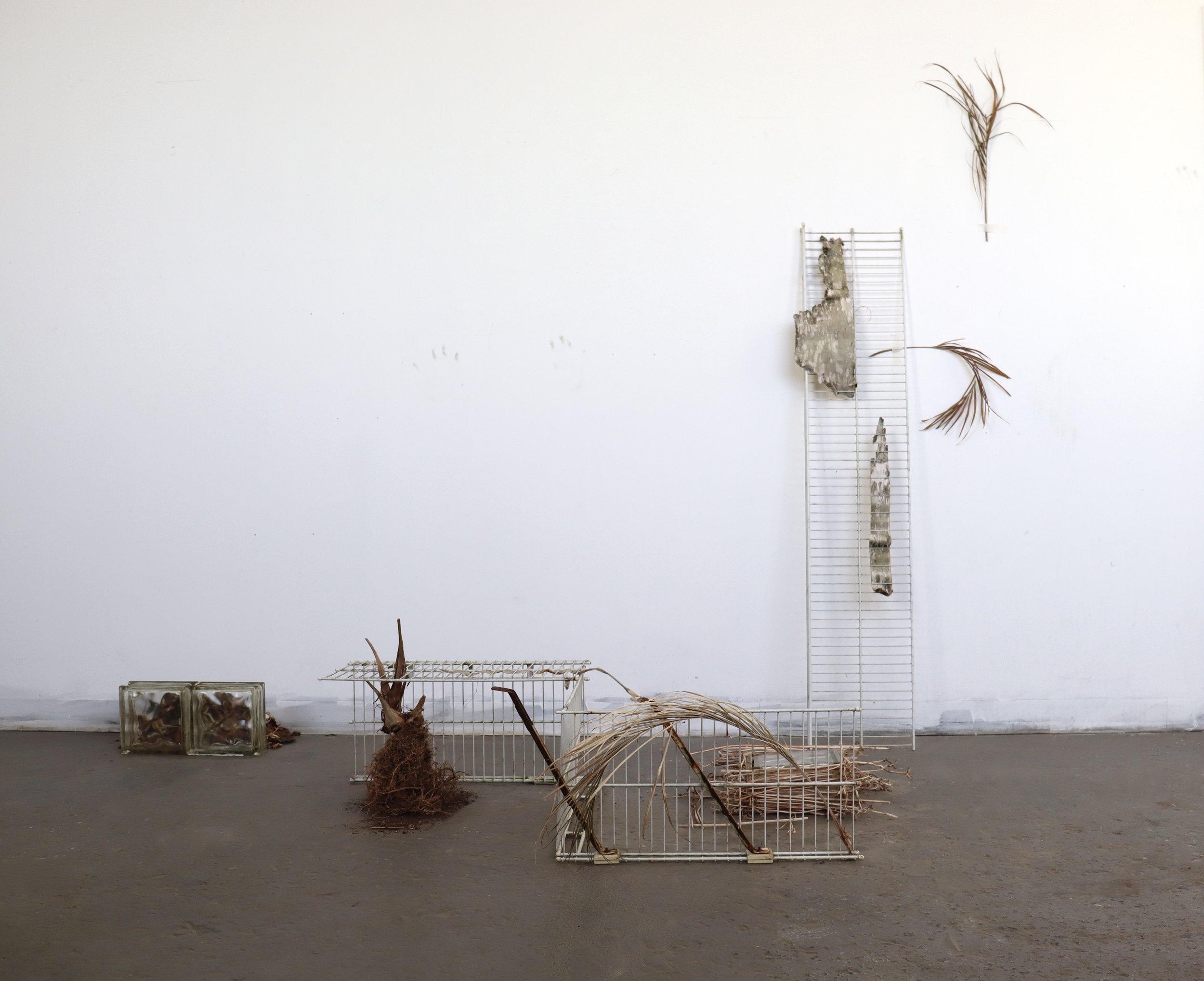ROY presents: Katherine Colborn Maxwell Holden , Nathan Byrne, Nicole Massy
Katherine Colborn, Place/d
My studio work is fueled by a desire to alleviate the contemporary pressures of a culture propelled by competition and production. I use framing and perspectival shifts to process images and structures at a time when—as a result of late capitalism and global crises—the concepts of home and rest are in constant flux. Wanting to counter feelings of distance, upheaval and anxiety, painting is my quiet resistance: it encourages reflections upon transience and domestic life and offers space to navigate transition. It is an attempt to fix the unfixable—to pin down the fluid concept of the sacred.
Inspired by hermeneutic philosophy and apophatic theology, I find myself swinging between contradictory states of belief. I am chasing steadiness in a liminal place that encompasses a simultaneous coming and going. This experience manifests itself most often in protected spaces, thus I've been led in my work to themes of threshold and sanctuary. My works create a respite and an entryway. They remind us that painting, in its stillness and imaginative capabilities, teaches us to rest where we do not live.
ROY asks
What is your name and preferred pronouns?
My name is Katherine Colborn. Preferred pronouns are she/hers.
How has art (whether it be your own or art in general) changed you?
I would say that my practice has always been a channel that reminds me of the kind of person I want to be. It has been a ritualistic act of making in which I regularly commit myself again and again to a life of real and honest personal inquiry. Art is so extraordinarily expansive, and it continually opens me to myself and to the world. It never stops surprising me or teaching me.
How did you start your artistic practice?
Like a lot of creative people, I loved making things when I was very young; I spent a lot of time drawing and painting and never stopped. While I was invested in learning about art and had a supportive family who worked hard to give me opportunities to learn, I didn’t really receive consistent, formal art education until I went to college. While there, I developed a consistent art practice and was deeply inspired by my studies in theology, philosophy, and literature. I missed that structured space for questioning and exploring after finishing my undergraduate degree, and I was inspired to pursue an MFA.
When a first-time viewer sees your work, what is the first word that you hope they think when looking at it?
I have a hard time summarizing work into single words, as it feels restrictive of something I hope transcends language. But I do hope viewers who see my work are encouraged to pause and consider how painting—as object and as experience—might teach them a new way to rest and reflect despite hurried motions or anxious times.
Maxwell Holden, Neighborhood
In this body of work for ROYGBIV, I am exhibiting projects that range from a few days to a few years old in growing plants and animals that have changed my life. I am responding to the alienation I have felt with nature and my response came focusing on scale shift through the garden as a miniature for the natural world and imagining myself as an even tiny part of it. To aid in this experience I have provided a scale-shifting camera that will reveal the unimaginable kaleidoscopic microverse invisibly complicated compared to our everyday macro lives.
I graduated into the first few months of the COVID-19 pandemic as unsure as anybody else. While I was stuck in the house I found myself fixated on youtube videos related to plants, homesteading, and environmental practices. The interest wasn’t new but a return to my experiences I had working on many farms in many countries since an early age. The cultural-ecological relationship has shifted greatly on both ends with increasing natural disasters and the collective cultural experience of the evolving pandemic.
I framed my research online with many readings by Micheal Pollan, Jenny Odelle, and Robin Kimmerer. The books explore nature from seemingly unrelated topics surrounding death rituals, cultural connections/rights to places, theory considering natural resources, and the incredibly complicated interconnections of all living things. Critically examining these perspectives through the lens of the arts, I began to develop alternative practices to dissect and share the experience of my own changing habitats I live in.
The garden, aquarium/terrarium, and decorative plants are some of the few remaining points of negotiation we have with nature. The boom in the house plant market with millennials is a reflection of the dramatic drop in homeownership as a priority or a financial option. As Columbus aggressively redevelops old homes into panel-clad anonymous timber box apartment complexes they continue to prove how unconnected the buildings are with the land, the architecture with the culture, and the tenets relationship with their neighbors. A recent Pew Research study revealed that a quarter of adults under thirty years of age don’t know any of their neighbors.
My recent work fully embraces my passion for plants, animals, and environments in my attempts to recreate some aspects of them in my own home with surprising success. I feel it is impossible to escape the relaxing or fleeting awe of witnessing organisms living through their lives. I believe our hand is as necessary for the well-being of our ecological diversity as much as it contributes to the destruction. I believe ranchers are connected to their horses, cattle, and herding dogs in ways far beyond profit, as are shepherds to sheep, firemen to dalmatians, pirates to parrots, and that we, average civilians can have flourishing relationships with the natural world despite being trapped in urban settings.
ROY asks
What is your name and preferred pronouns
Maxwell Holden He/Him
How has art (whether it be your own or art in general) changed you?
It has become a way for me to consider the world.
How did you start your artistic practice?
I felt I couldn't do anything else.
When a first-time viewer sees your work, what is the first word that you hope they think when looking at it?
Material
Nathan Byrne, NEW POINT OF BEGINNING
NEW POINT OF BEGINNING is a body of work which draws from Nathan Byrne’s memory of his mother Denny Byrne–who passed away 15 years ago from complications due to alcoholism and lack of access to adequate health care. During the summer of 2021, Nathan embarked on a research trip and art residency in Deming and Truth or Consequences, NM. He sought to find connections to his mother through the desert landscape, weather-beaten objects, found scattered across what was once her home. While working on her land, he constructed two large scale site-specific sculptures which reimagined a dilapidated raised bed and found remnants of fencing material previously used by his mother for gardening. In NEW POINT OF BEGINNING, Byrne presents dye-sublimation prints which document these site-specific projects, alongside other works connected to his mother and the land on which she lived. By working in varied modalities such as painting, sculpture, collage, alternative photography, and prose, Byrne searches for a new awareness and healing from the heartrending loss of his mother as he ponders her lingering presence in his life.
ROY asks
What is your name and preferred pronouns
My name is Nathan Byrne and my preferred pronouns are he/him.
How has art (whether it be your own or art in general) changed you?
Artmaking for me is a way of dreaming which materializes in a work that can be experienced by others. So, there is a sense of empathy which is an inherent part of my art practice. This sensibility carries over to my collaborations with other artists as well, which is another mainstay of my research and work.
How did you start your artistic practice?
In my early twenties, I was deeply interested in the Dadaist and Surrealist movements. I made collages and used found objects in assemblages. All my work was born from these initial experiments with collage and variations of shadow boxes. My current projects are interdisciplinary, and range in scale from smaller sculptural objects to immersive installation and site-based works. From the very beginning I have pursued a deep interest in the poetics of reverie, and the embodied experience of space. From these two interests, my work explores allegorical and universal themes which the viewer encounters in the artwork.
When a first-time viewer sees your work, what is the first word that you hope they think when looking at it?
When a first-time viewer sees my work, I hope that they ‘feel’ the work as much as they ‘see’ it. I am most interested in the viewer’s inner experience.
Thanks to Joel Oliphint of Columbus Alive for writing about Nathan and his work, read the article by clicking on this link
Nicole Massy, Persistent Systems
I am a collector of detritus. I source many of my materials from hardware store dumpsters, scrapyards, the woods, and my garden. By using non-traditional and reclaimed materials for art making, I attempt to be ecologically conscious and sustainability minded in my studio practice.
In my installations and sculptures, I remove plant matter from its natural environment and reposition it against materials found in the manufactured landscape of domestic and urban spaces. Chewing gum plugs a tree knot, bark weaves through discarded shelving, and a sectioned branch is held together by a hinge —through these pairings I explore the enmeshed relationship of nature and our built environment. By contrasting organic and industrial materials, I reflect on nature’s cycles of growth and decay and the concept of impermanence. I seek to highlight the imbalance a world driven by consumerism and over production has created. My work is an exploration of the disembodiment of modern life and its modes of production/consumption from nature’s order and systems of recycling matter.
Roy Asks
What is your name and preferred pronouns?
Nicole Massy, my pronouns are she/her
How has art (whether it be your own or art in general) changed you?
Studying and experiencing art, as well as creating my own work, has provided me a vehicle to physicalize and unpack complex ideas about our rapidly changing world, culture, and human experiences. My practice is the embodiment of my constant reflection upon the impermanence of all things and my fascination with nature. My work relates these notions to how I process the impending climate disaster, and has given me the voice to make a statement for the environment.
How did you start your artistic practice?
I got into art drawing horse portraits as a teenager for the people I used to ride with. This led me to art school, a time during which I worked at a garden center and was inspired to start exploring using plants and organic matter as material for sculpture/installation. My interest in sourcing material from nature has continued to grow ever since and now forms the basis of my practice.
When a first-time viewer sees your work, what is the first word that you hope they think when looking at it?
I don’t think a word is what I hope for so much as a feeling. I hope my work reminds viewers of the incredible impermanence and fragility of life, and how society and its operating systems are unfortunately messing up that balance.




